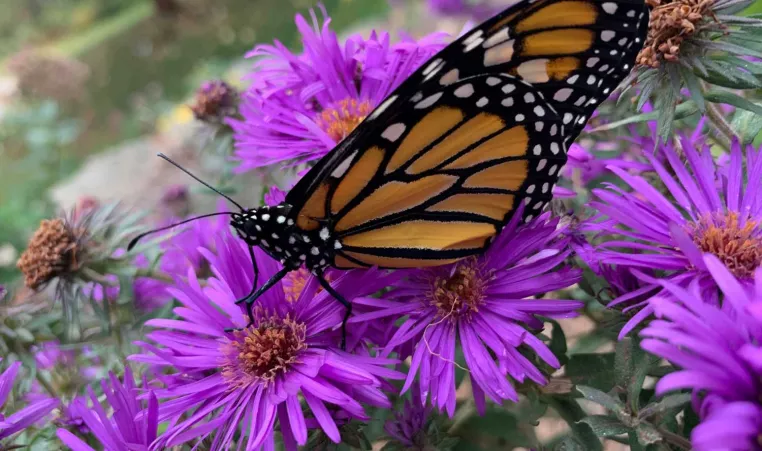There is No Better Time to Start a Wildlife Garden

Spring is finally here! There is no better time for your family to break away from your latest Netflix binge and get outside to create a wildlife garden to attract birds, butterflies and more. Whether you have a backyard or simply a balcony with some room for a few planters, your family can provide the basic habitat needs to attract birds, butterflies and more!
Follow these tips and you'll be well on your way to a beautiful wildlife garden.
Choosing Your Plants
A garden isn’t a garden without plants! Follow these helpful tips to create a garden that is both beautiful and a buffet to birds, butterflies and other wildlife.
Choosing to use native plants from our region.
While many nurseries have beautiful flowers and shrubs available, plants from Europe or Asia are rarely used as a food source by our local critters.
For example, butterflies not only need native plants to survive, but they often need a specific type of native to serve as the “host” plant for their caterpillar. Monarch caterpillars need milkweed plants to feed on before developing into a chrysalis and then into a butterfly.
Native plants can also handle having a few leaves munched by insects. Many of those insects then serve as food for birds feeding their young throughout the spring and summer.
Choose flowers that support pollinators (bees, birds, bugs).
Cardinal flower serves as an excellent nectar source for our local ruby-throated hummingbird and the kids love watching them buzz around. You can also include a bird feeder or two within or near your garden.
Here is a list of nurseries in Pennsylvania that provide native plants for sale.
Water - Not Just for Your Plants
Your plants are not the only thing in your garden that need water to survive and thrive.
Consider adding a birdbath, in-ground pond, fountain - or simply a bowl of water - to your garden to provide a source of water for birds, who need it to drink and bathe. Remember to change sitting water (in a birdbath or bowl) daily which will eliminate the chances for mosquitoes and provide a fresh water source for the wildlife.
Place your water source easily visible from your home and you’ll get to enjoy watching your new visitors.
Provide Some Cover
Sometimes animals need a place to find shelter during a rainstorm or cool off in the shade on a hot day. Shrubs, small brush piles, rock piles and even a single log can provide this kind of shelter and a place to hide from predators. Providing places where wildlife feel safe in your garden increases the chances of critter visits for your family to observe.
If stick piles or planting a shrub are not in your plans, another way to provide cover is by installing a nest box. Nest boxes are a great way to attract cavity-nesters, birds who would normally live inside a hole in a tree. This includes bluebirds, chickadees, swallows and wrens.
Nest boxes serve as a place for birds to raise their young and they provide wildlife watching opportunities from a distance. If you have basic carpentry skills and the right tools, nest box plans can be found online to build your own. Or if you’re like me who doesn’t possess the skills or tools, you can find completed boxes for sale online or at local wild bird stores and garden shops.
Ready, Set Go!
Your garden can start out small and stay small. Or you can continue to add and grow your patch of habitat each year. I have created a few wildlife gardens around our yard while still providing plenty of room for our kids to play.
Gardening is not only a fun family activity but it can have a profound positive impact on children with improved moods, better hands-on learning experiences and decreased anxiety. I think we could all use that kind of experience!
Article by Brian Raicich
Brian Raicich is the Executive Director at the Upper Main Line YMCA where he oversees their 54-acre property in Berwyn, PA offering nature and environmental programs for all ages. He graduated from Penn State University with a bachelor's degree in Environmental Resource Management and a master's degree in Environmental Pollution Control. He is a certified Pennsylvania Tree Tender, has created wildlife gardens at home and has worked with countless volunteers to plant more than 500 native trees and shrubs at the Y.
Here are some additional online resources to help get your family started on planning your wildlife garden today: